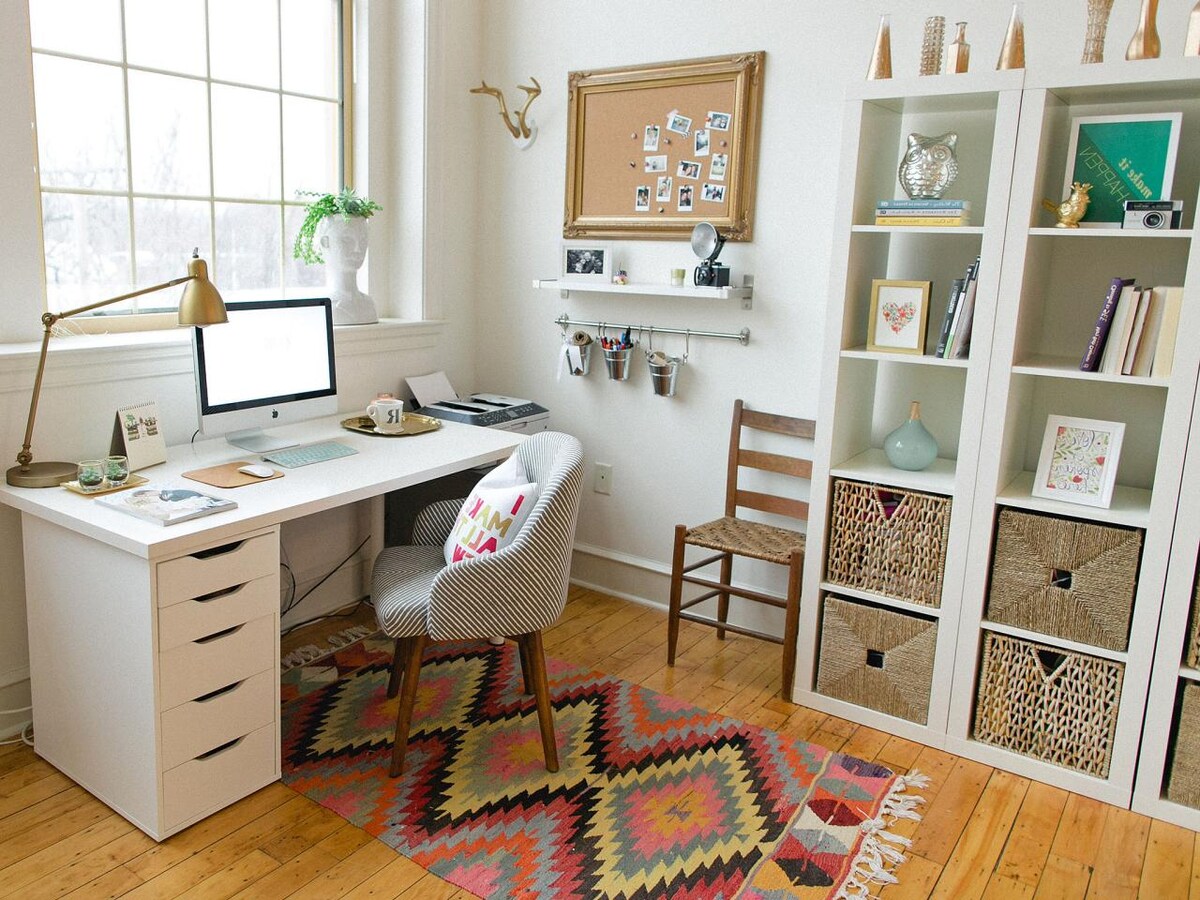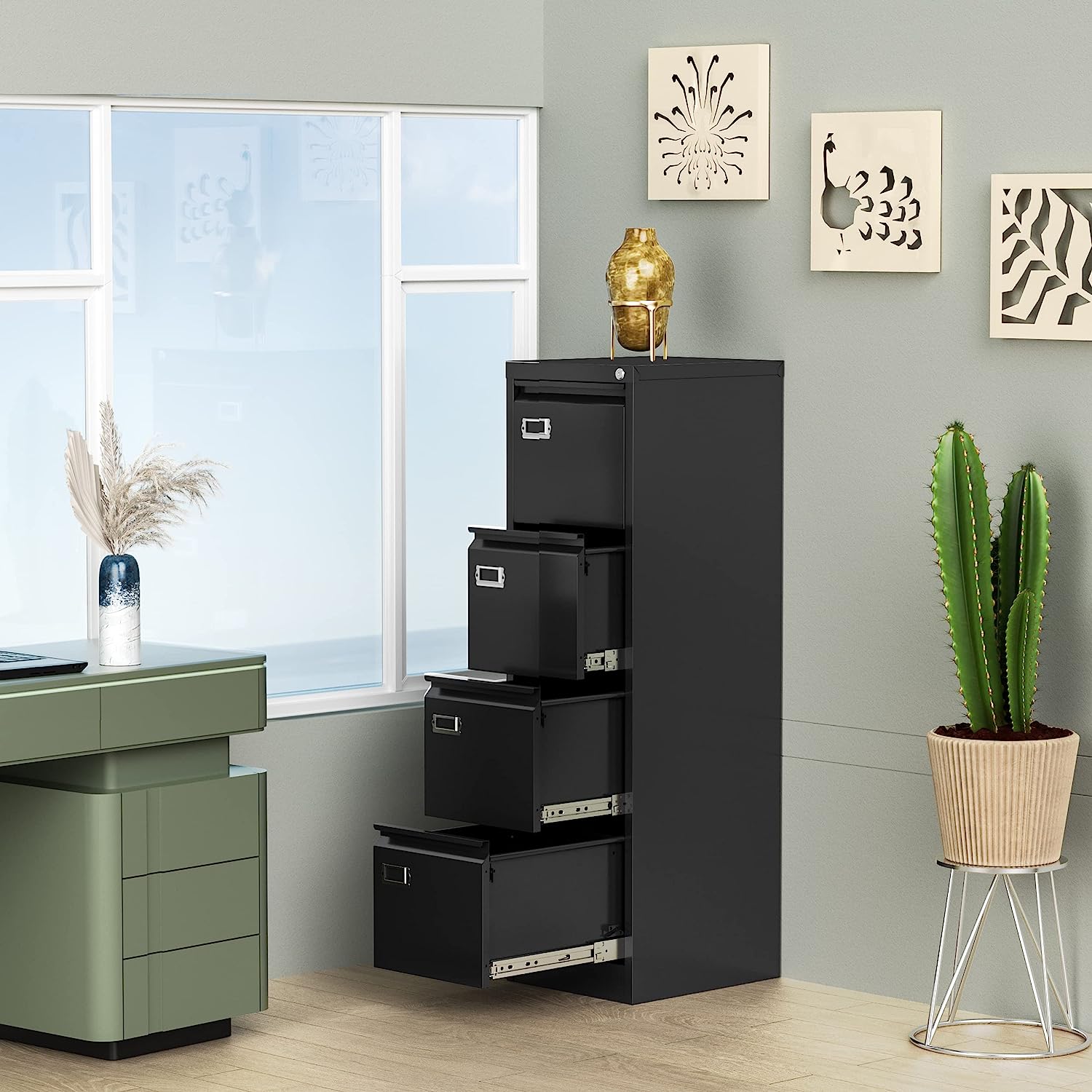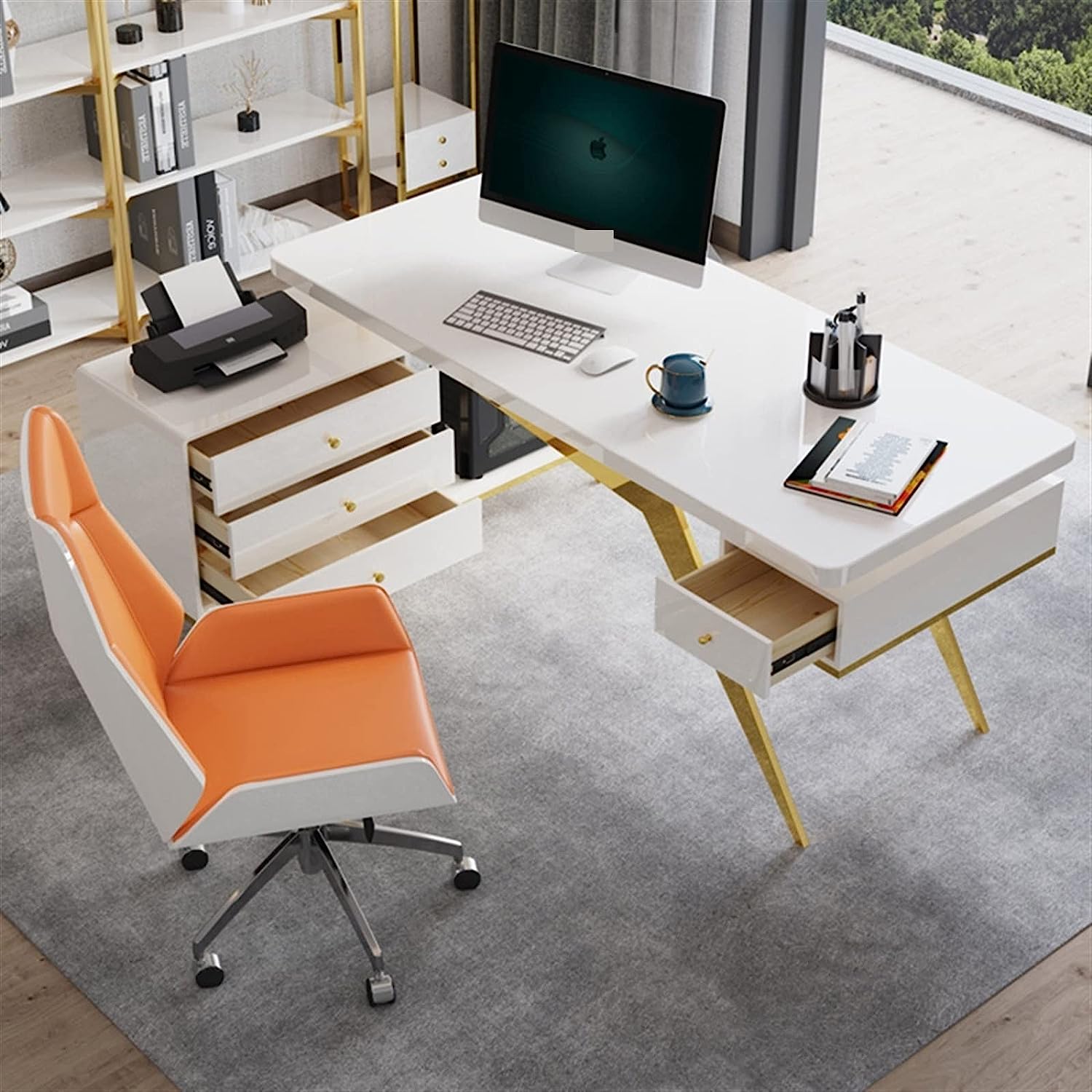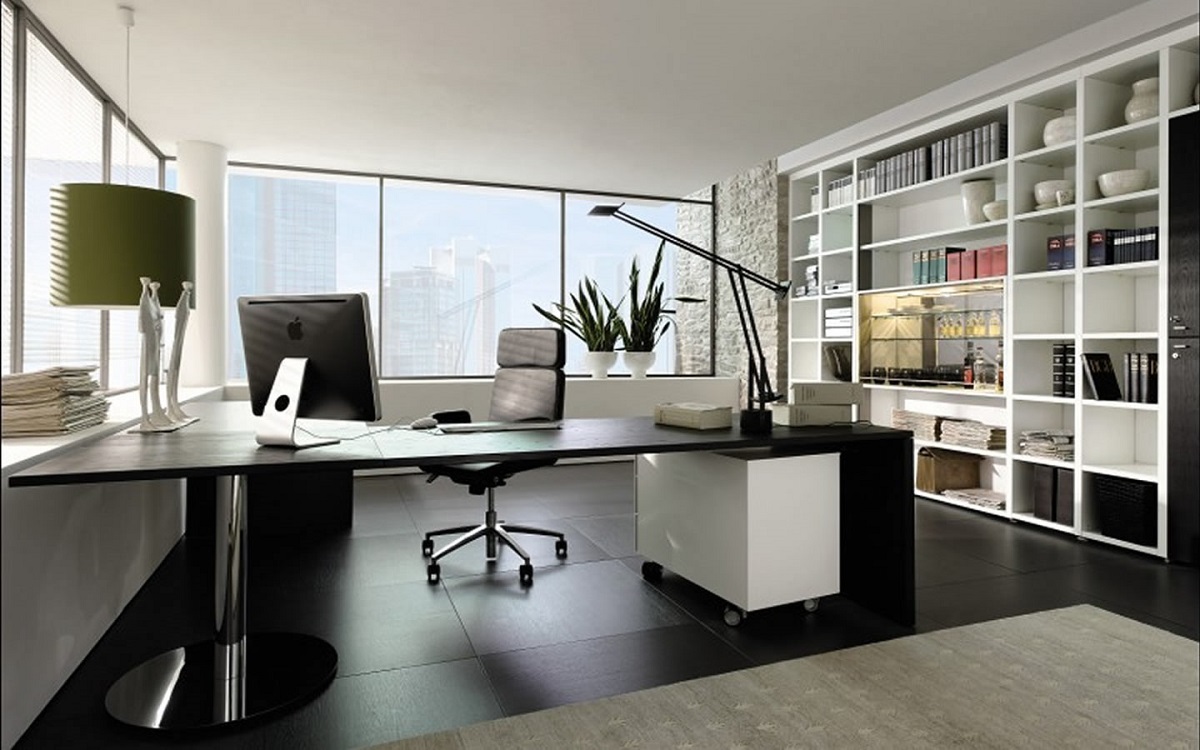Home>Technology>Home Office Tech>How To Organize A Home Office


Home Office Tech
How To Organize A Home Office
Modified: March 24, 2024
Learn how to optimize your home office with the latest tech and organization tips. Create a productive workspace with our expert advice.
(Many of the links in this article redirect to a specific reviewed product. Your purchase of these products through affiliate links helps to generate commission for Storables.com, at no extra cost. Learn more)
Benefits of Having a Home Office
Having a home office offers numerous advantages that can significantly improve your work-life balance and productivity. Here are some of the key benefits of setting up a dedicated workspace in your home:
-
Flexibility: One of the most significant benefits of having a home office is the flexibility it provides. You have the freedom to set your own schedule, work at your own pace, and tailor your environment to suit your preferences.
-
Cost Savings: Working from home can lead to substantial cost savings. You can save money on commuting expenses, work attire, and dining out, which can have a positive impact on your overall budget.
-
Increased Productivity: With fewer distractions and the ability to create a personalized work environment, many people find that they are more productive when working from a home office.
-
Work-Life Balance: A home office allows you to better balance your work and personal life. You can easily attend to personal matters, spend time with family, and take breaks as needed without the constraints of a traditional office setting.
-
Reduced Stress: Commuting to and from work can be stressful and time-consuming. By eliminating the need to commute, you can reduce stress and enjoy a more relaxed start and end to your workday.
-
Customization: When you have a home office, you have the freedom to customize your workspace to your liking. You can choose the decor, lighting, and layout that best suits your work style and preferences.
-
Health Benefits: Working from home can lead to improved health and well-being. You have the flexibility to incorporate physical activity, healthy meals, and relaxation into your daily routine, which can have a positive impact on your overall health.
-
Professionalism: A well-organized and functional home office can project a professional image to clients, colleagues, and employers. It shows that you are dedicated, organized, and serious about your work.
Overall, having a home office can lead to a more balanced, productive, and fulfilling work experience. Whether you are self-employed, telecommuting, or simply need a dedicated space for personal projects, the benefits of a home office are undeniable.
Key Takeaways:
- Benefits of a Home Office
Setting up a home office offers flexibility, cost savings, increased productivity, work-life balance, reduced stress, customization, health benefits, and professionalism, leading to a more balanced and fulfilling work experience. - Creating a Productive Work Environment
To maximize efficiency, maintain focus, and manage distractions, prioritize ergonomics, minimize clutter, personalize your space, establish task zones, enhance comfort and ambiance, implement visual organization, and embrace natural elements in your home office.
Choosing the Right Location for Your Home Office
When setting up a home office, choosing the right location is crucial for creating a productive and comfortable workspace. Here are some key factors to consider when selecting the ideal spot for your home office:
1. Dedicated Space
Ensure that your home office is located in a dedicated space that is separate from the main living areas. This will help minimize distractions and create a professional work environment. If possible, choose a room with a door that can be closed to provide privacy and minimize interruptions.
2. Natural Light
Opt for a location that receives ample natural light. Natural light not only enhances the aesthetics of your workspace but also has a positive impact on mood and productivity. Position your desk near a window to take advantage of natural daylight while working.
3. Quiet Environment
Select a location that is relatively quiet and free from excessive noise. This will help you concentrate and focus on your tasks without being disrupted by external disturbances. If noise is a concern, consider using sound-absorbing materials or investing in noise-canceling headphones.
4. Adequate Space
Choose a location that offers sufficient space to accommodate your work essentials, such as a desk, chair, storage units, and any necessary equipment. A clutter-free and well-organized workspace can contribute to a more efficient and enjoyable work experience.
5. Accessibility
Consider the accessibility of the location within your home. Ideally, your home office should be easily accessible from the main entrance and other essential areas of the house. This will make it convenient for you to transition into work mode and access your workspace whenever needed.
6. Ergonomics
Prioritize ergonomics when selecting a location for your home office. Look for a space that allows you to set up your workstation in a way that promotes good posture and reduces the risk of discomfort or strain. Consider factors such as desk height, chair comfort, and overall layout.
7. Personal Preference
Ultimately, consider your personal preferences and work style when choosing the location for your home office. Whether it's a secluded corner of the house, a converted spare room, or a well-lit area with a view, select a space that resonates with your individual needs and inspires productivity.
By carefully considering these factors, you can choose a location for your home office that aligns with your work requirements and enhances your overall work experience. A well-chosen location can contribute to a more efficient, comfortable, and enjoyable work environment within your home.
Read more: How To Organize An Office Filing System
Essential Furniture and Equipment for Your Home Office
Setting up a functional home office requires careful consideration of the essential furniture and equipment needed to support your work activities. Here are the key items to include in your home office setup:
1. Ergonomic Desk and Chair
Invest in an ergonomic desk and chair to promote comfort and support during long hours of work. The desk should provide ample space for your computer, paperwork, and other essentials, while the chair should offer proper lumbar support and adjustability to maintain good posture.
2. Computer and Monitor
A reliable computer or laptop is a fundamental requirement for most home offices. Additionally, consider incorporating a high-quality monitor to enhance screen real estate and improve multitasking capabilities. Ensure that your computer setup meets your specific work demands, whether it involves graphic design, programming, or general office tasks.
3. Storage Solutions
Effective storage solutions are essential for maintaining a tidy and organized workspace. Consider including filing cabinets, shelves, or storage units to keep documents, supplies, and equipment neatly arranged and easily accessible. Utilize storage solutions that align with your workflow and space requirements.
4. Task Lighting
Proper lighting is crucial for reducing eye strain and creating a well-lit work environment. Incorporate task lighting, such as a desk lamp or adjustable light fixtures, to illuminate your workspace. Natural light from windows can also complement your lighting setup and contribute to a more inviting atmosphere.
5. Printer and Scanner
If your work involves frequent printing, scanning, or copying, having a dedicated printer and scanner can streamline your workflow. Choose a multifunctional device that meets your printing and scanning needs, and ensure that it integrates seamlessly into your home office layout.
6. Office Supplies
Stock up on essential office supplies, including pens, notepads, sticky notes, paper clips, staplers, and other items that support your daily tasks. Having these supplies readily available can enhance efficiency and prevent interruptions when you need to jot down notes, mark documents, or organize paperwork.
7. Technology Accessories
Consider incorporating technology accessories such as a keyboard, mouse, mousepad, and cable management solutions to optimize your computer setup. These accessories can improve comfort, streamline navigation, and contribute to a more organized and efficient workspace.
8. Personal Touches
Incorporate personal touches such as plants, artwork, or decorative elements to infuse your home office with a sense of personality and inspiration. These touches can contribute to a more inviting and motivating work environment, reflecting your individual style and preferences.
By carefully selecting and incorporating these essential furniture and equipment items into your home office, you can create a functional, comfortable, and productive workspace that supports your professional endeavors. Tailor your choices to align with your specific work requirements and preferences, ensuring that your home office reflects your unique needs and enhances your overall work experience.
Setting Up an Effective Filing System
Setting up an effective filing system is essential for maintaining organization and accessibility within your home office. A well-organized filing system can streamline your workflow, prevent clutter, and ensure that important documents are readily available when needed. Here's how to establish an efficient filing system:
1. Categorize Your Documents
Begin by categorizing your documents based on their relevance and frequency of use. Common categories may include financial records, client information, project files, reference materials, and personal documents. By grouping similar documents together, you can create a clear structure for your filing system.
2. Choose Appropriate Storage Solutions
Select suitable storage solutions such as filing cabinets, shelves, or storage boxes to accommodate your categorized documents. Consider the volume of documents within each category and choose storage options that provide ample space while fitting seamlessly into your home office layout.
Read more: 15 Best Metal Storage Cabinet Picks of 2024
3. Use Clear Labels
Label each storage container or file folder with descriptive and easily identifiable labels. Clear and concise labeling ensures that you can quickly locate specific documents without the need for extensive searching. Utilize color-coded labels for visual distinction and quick reference.
4. Establish a Filing Hierarchy
Create a logical filing hierarchy that allows for easy navigation and retrieval of documents. Organize documents within each category in a hierarchical manner, such as by date, alphabetical order, or project name. This hierarchical structure simplifies the process of locating specific documents within your filing system.
5. Implement a Digital Filing System
Incorporate a digital filing system to complement your physical filing setup. Utilize cloud storage, document management software, or a dedicated hard drive to store digital copies of important documents. Ensure that your digital filing system mirrors the organization of your physical files for consistency and ease of access.
6. Regular Maintenance and Purging
Schedule regular maintenance sessions to review and purge outdated or unnecessary documents from your filing system. Discard or archive documents that are no longer relevant, ensuring that your filing system remains current and clutter-free. Regular maintenance prevents the accumulation of unnecessary paperwork.
Read more: 25 Best Desk Organizer Options To Go For
7. Secure Important Documents
For sensitive or confidential documents, implement additional security measures such as lockable filing cabinets or encrypted digital storage. Protecting important documents from unauthorized access is crucial for maintaining the integrity and confidentiality of your files.
By following these steps, you can establish an effective filing system that promotes organization, accessibility, and efficiency within your home office. A well-structured filing system simplifies document management, reduces the risk of misplaced information, and contributes to a more streamlined and productive work environment.
Creating a Productive Work Environment
Creating a productive work environment is essential for maximizing efficiency and maintaining focus within your home office. By implementing the following strategies, you can cultivate a workspace that fosters productivity and supports your professional endeavors.
1. Optimize Ergonomics
Prioritize ergonomics by arranging your desk, chair, and computer setup to promote comfort and reduce the risk of strain. Ensure that your chair provides proper lumbar support, your desk is at an appropriate height, and your computer monitor is positioned at eye level to maintain good posture.
2. Minimize Clutter
Keep your workspace organized and free of unnecessary clutter. Utilize storage solutions and desk organizers to maintain a tidy environment. A clutter-free workspace can reduce distractions and contribute to a more focused and efficient work experience.
Read more: 6 Desk Decor That Help Increase Productivity
3. Personalize Your Space
Incorporate elements that reflect your personality and inspire creativity. Add personal touches such as artwork, plants, or motivational quotes to infuse your workspace with a sense of individuality. A personalized environment can enhance your mood and motivation while working.
4. Establish Zones for Different Tasks
Create designated zones within your home office for specific tasks, such as a focused work area, a collaboration space, and a relaxation corner. This segmentation can help you mentally transition between different types of work and maintain a clear separation of tasks.
5. Enhance Comfort and Ambiance
Consider the ambiance of your workspace by incorporating elements that enhance comfort and well-being. This may include adding comfortable seating, adjusting lighting to reduce glare, and incorporating soothing elements such as aromatherapy or background music to create a pleasant work atmosphere.
6. Implement Visual Organization
Utilize visual cues and organizational tools to keep track of tasks, deadlines, and priorities. Use whiteboards, calendars, or digital task management tools to visually represent your workflow and stay on top of your commitments.
7. Embrace Natural Elements
Incorporate natural elements such as plants or natural light to create a refreshing and invigorating atmosphere. Natural elements can contribute to a sense of tranquility and connection to the outdoors, promoting a more relaxed and productive work environment.
By implementing these strategies, you can create a productive work environment that supports your professional goals and enhances your overall work experience within your home office. Tailor your workspace to align with your preferences and work style, ensuring that it promotes focus, creativity, and efficiency.
Managing Distractions in a Home Office
Distractions can significantly impact productivity and focus within a home office environment. Implementing effective strategies to manage and minimize distractions is essential for maintaining a conducive work atmosphere. Here are several approaches to help you effectively manage distractions in your home office:
-
Designate a Dedicated Workspace: Establish a designated area within your home that is solely dedicated to work. By creating a distinct workspace, you can mentally associate this area with productivity and focus, reducing the likelihood of being distracted by household activities or leisure.
-
Set Clear Boundaries: Communicate clear boundaries with family members or housemates regarding your work hours and the importance of minimizing interruptions during designated work times. Establishing these boundaries can help create a more professional and focused work environment.
-
Utilize Noise-Canceling Headphones: Invest in noise-canceling headphones to block out ambient sounds and create a quieter, more focused auditory environment. Listening to instrumental music or white noise can also help mask distractions and enhance concentration.
-
Establish Break Times: Schedule regular breaks to address personal tasks or attend to household matters. By allocating specific times for breaks, you can address potential distractions without disrupting the flow of your workday.
-
Implement Visual Cues: Use visual cues, such as a "Do Not Disturb" sign or a closed door, to indicate when you should not be interrupted. Clear visual signals can help others recognize when you are in focused work mode.
-
Minimize Digital Distractions: Limit the temptation of digital distractions by silencing non-essential notifications on your devices. Consider using website blockers or productivity apps to restrict access to distracting websites or applications during work hours.
-
Establish Clear Work Routines: Create a structured daily routine that includes designated work hours, breaks, and specific tasks. Having a clear routine can help you stay on track and minimize the potential for distractions.
-
Practice Mindfulness and Focus Techniques: Incorporate mindfulness practices or focus techniques, such as meditation or deep breathing exercises, to enhance your ability to concentrate and redirect your attention when distractions arise.
-
Optimize Lighting and Comfort: Ensure that your workspace is well-lit and comfortable to minimize physical distractions. Proper lighting and ergonomic comfort can contribute to a more conducive work environment.
-
Address Personal Wellness: Prioritize personal wellness by incorporating regular physical activity, healthy meals, and adequate rest into your daily routine. Maintaining overall well-being can help reduce stress and improve your ability to manage distractions effectively.
By implementing these strategies, you can create a more focused and productive work environment within your home office. Managing distractions effectively is essential for optimizing your work performance and achieving a healthy work-life balance.
Establishing a Daily Routine for Your Home Office
Establishing a daily routine for your home office is essential for maintaining structure, productivity, and work-life balance. A well-defined routine can help you manage your time effectively, stay focused, and establish boundaries between work and personal life. Here's a detailed guide on how to establish a daily routine that optimizes your home office experience:
1. Set Consistent Work Hours
Define specific work hours that align with your most productive times and personal commitments. Consistency in your work schedule helps create a sense of routine and allows you to plan your tasks and breaks accordingly.
2. Start with a Morning Routine
Begin your workday with a morning routine that prepares you for the day ahead. This may include activities such as exercise, meditation, or enjoying a nutritious breakfast. A morning routine can set a positive tone for the day and help transition into work mode.
3. Prioritize Important Tasks
Identify the most critical tasks for the day and allocate dedicated time slots to address them. Prioritizing tasks ensures that you tackle essential work while your energy and focus are at their peak.
4. Schedule Breaks and Lunchtime
Incorporate regular breaks and a designated lunchtime into your daily routine. Taking short breaks throughout the day can help prevent burnout and maintain mental clarity. Use break times to step away from your workspace and recharge.
5. Incorporate Physical Activity
Integrate physical activity into your routine, whether it's a morning workout, a midday walk, or stretching exercises. Physical activity can boost energy levels, reduce stress, and enhance overall well-being.
Read also: 15 Best Desk Storage For 2024
6. Define End-of-Day Rituals
Establish end-of-day rituals to signify the completion of work and transition into personal time. This may involve reviewing your accomplishments, organizing your workspace, and creating a to-do list for the next day.
7. Set Boundaries with Family or Housemates
Communicate your work hours and the importance of minimizing interruptions to family members or housemates. Setting clear boundaries helps create a professional work environment and reduces distractions.
8. Create a Post-Work Transition
Develop a post-work transition to signal the end of the workday. This could involve engaging in a hobby, spending time with family, or engaging in relaxation activities to shift your focus away from work.
9. Reflect and Adjust
Regularly reflect on your daily routine and make adjustments as needed. Assess what aspects of your routine are working well and identify areas for improvement to enhance your overall productivity and well-being.
By establishing a daily routine tailored to your work style and preferences, you can create a structured and balanced approach to managing your home office. A well-crafted routine can help you navigate the unique challenges of working from home while maximizing your productivity and overall satisfaction with your work environment.
Frequently Asked Questions about How To Organize A Home Office
Was this page helpful?
At Storables.com, we guarantee accurate and reliable information. Our content, validated by Expert Board Contributors, is crafted following stringent Editorial Policies. We're committed to providing you with well-researched, expert-backed insights for all your informational needs.






0 thoughts on “How To Organize A Home Office”